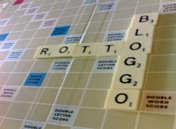
Lots of good things come from Rotto - like honey.
One of Rotto Bloggo's bright young journalism students at Curtin wrote a lovely story on Rottnest honey. As we speak the story is being perused in that journal of record, the Western Independent. Thank god there are no feral bees on the beautiful island. I'd pay a small fortune for that.
--
At $60 a kilo Bees Neez Apiaries is producing Western Australia’s most expensive honey.
David and Leilani Leyland, owners of Bees Neez Apiaries, first began production of the rare Rottnest Island Honey late last year.
Only 80 250gm jars of Rottnest Island Honey were produced.
The honey is sold only at Bees Neez Apiaries, located in Beechina, as well at Rottnest Island’s General Store.
The Apis mellifera ligustica, an Italian bee, is taken to Rottnest Island once a year and left to produce a honey free of any contamination.
According to David Leyland, who is also the head of the Bee Keeper Department at the Western Australian Farmers Federation, the honey is perceived to be something special.
“Because there are no feral bees on Rottnest, we can get the sort of matings that we desire, the right characteristics.
“By taking the bees over to Rottnest, we are ensuring that we are producing a pure type of honey free from contamination,” he said.
“This Rottnest Island Honey in reality is not your typical Australian honey as the bees feed off a weed type of plant, giving the honey its sweet yet bitter taste.”
The process of deriving honey from its hive is normally done using machinery, but Rottnest Island Honey is manually hand spun twice after it is extracted from the hives.
This is known as the two-frame extractor process that Mr Leyland says aids in producing its “delicate” flavour.
Rottnest Island Honey may see an increase in production in the future but Mr Leyland says that all depends on how popular the honey is.
“This year we are going to work with seven other bee keeper businesses to produce more of the Rottnest Island Honey.
“If we can buy the honey off them we can produce a bit more but I’m not sure we will go that way yet, it all depends on the demand."
It takes 125 bees one week to produce a single 250gm jar of Rottnest Island Honey.
The average bee produces two teaspoons of honey in its six to eight week lifespan.
The Western Australia Agriculture Department began the process of taking bees from the mainland around 30 years ago.
Daughter Queen bees from the best were mated and assigned to drones at Rottnest Island to ensure quality production of WA honey.
Mr Leyland describes the reason for breeding bees on Rottnest Island.
“In 1978, Western Australia’s borders were closed for any bee imports or bee products.
“To make sure that we continued having good quality bees, they (the Agriculture Department) had to start breeding their own (bees).
“Obviously the Ag Department over at Rottnest Island started breeding bees for the industry and that industry took over.”
Border closure resulted in WA becoming the only state free of European Foulbrood, a disease threatening to wipe out bees worldwide.
WA is also the only state that does not use any pesticides to extract bees from their hives.
Today, 40 per cent of Western Australia’s honey is exported.


Hi David
ReplyDeleteI would like to reproduce this post in Helix aspera, the newsletter of Slow Food Perth. Can you please let me know if this is OK. I would have emailed you but don't have your email address.
Cheers
Jane (Newsletter Editor)
Jane, it's not up to me - I've emailed the student who wrote the story to see what she thinks. Contact me at dcohen@amnet.net.au.
ReplyDeleteBeing a former amateur beekeeper I was interested to spot an old one-box hive secluded in the Rottnest scrub when I was wandering about last week. I also saw a large number of dead bees on the edge of Lake Serpentine, and a small swarm on the loose west of Kingston Barracks. Cheers, Paul.
ReplyDelete